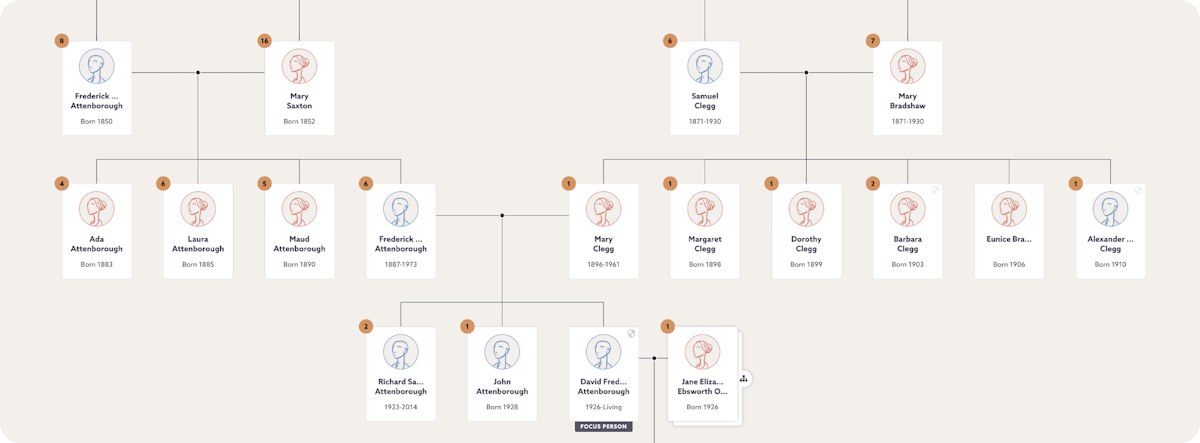A complete guide to building your family tree
7-8 minute read
By Daisy Goddard | August 15, 2023
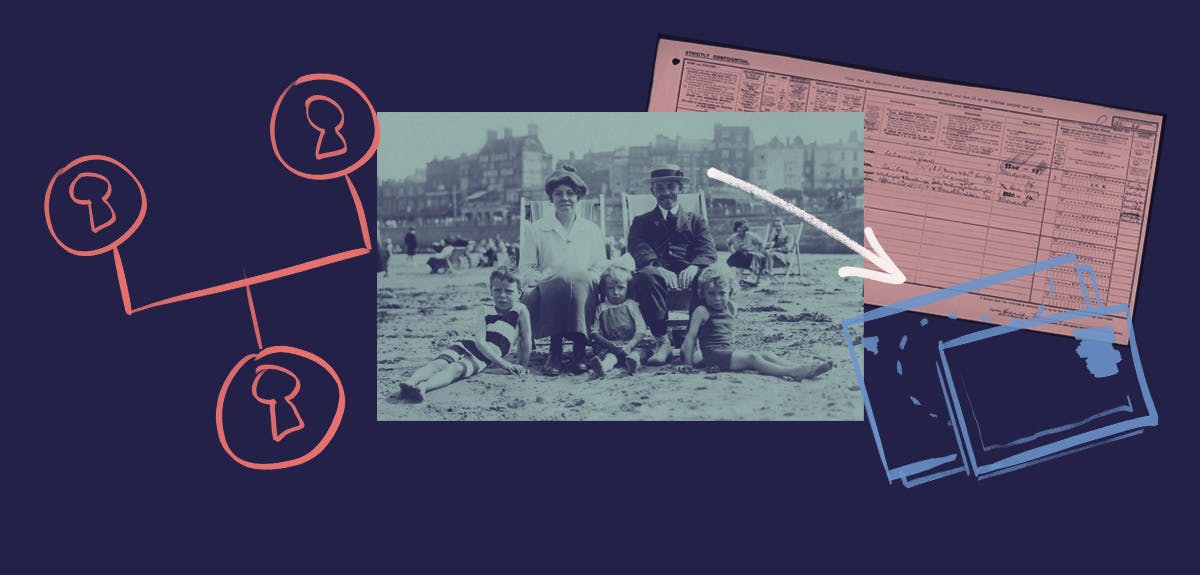
Making a family tree is a key part of family history research. With this easy-to-follow guide, you'll be making exciting discoveries in no time...
From the best records to use to the first steps you should take, building a family tree may seem like a daunting task if you've never made one before. But the good news is, it's easier than you might think.
Family trees explained
Let's start with the basics. The Collins Dictionary defines a family tree as:
"A chart that shows all the people in a family over many generations and their relationship to one another. Each branch represents a part of your family and has the names of, and key details about, your family members on it. "
Mirroring the exponential growth that can take place in a family when each member splits off with their very own family (by marrying and/or having children, who then go on to have their own children and families, etc...), a tree can sprawl out to encompass hundreds of family members or more.
The best way to understand how this type of organisational chart works is to browse some family tree examples for yourself - it may be a good idea to check out our Royal family tree. We've also made more than a few fascinating discoveries by researching the trees of some other notable names.
From national treasures like Julie Andrews and Mary Berry to the cast of The Crown, there's no shortage of celebrity family trees to explore within the Discoveries section of our blog.
How can a tree help me to research my family history?
If you're curious to learn more about the history of your family, your tree provides a handy way of organising and visualising your research. Ask any genealogist and they'll agree; when researching family history, a family tree is the way to go.
When you trace back two or three generations (or more), the facts can get a bit confusing. Having the family relationships recorded visually helps you to keep track of your discoveries.
You'll be able to easily see and understand your lineage, with a family tree diagram displaying hundreds of years of history and numerous different surnames, all leading up to the present day.
How to build a family tree
Family trees are built in reverse-chronological order, meaning you start with yourself and then trace your family backward. To start, you'll need to put in your own name, birth date, and birthplace. You can then add any siblings, who will sit on the same branch as you.
From there, you add all the family members you know. Add in your parents' names, birth dates, and any other handy information. With branches stemming from them, you can add your paternal and maternal grandparents. These three generations form the bare bones of your tree.
You can then embellish your tree with aunts, uncles, cousins, and other more distant family members. To keep up with all of your different relations, be sure to consult our kinship terminology guide.
Eventually, you'll use historical records to fill in the blanks for other relatives. Perhaps your great-grandmother's identity is a mystery, or you've got a great-uncle who you never knew? With the right sources, you'll likely be able to find some of the answers you're looking for.
Why should you research your ancestry using a family tree?
A family tree provides a great way of preserving key moments in your family's past.
It's one thing to have heard family stories about your grandparents' marriage, for example, but it's another thing to look at their marriage record for yourself, to scour it for details, and use the information provided to build out a detailed picture. With online research, you can likely find a photo of the church they were married in. There's always more to discover...
From military stories to ancestors with unconventional lives, your research might uncover some surprising things. A tree is ideal for recording these finds, and preserving them for generations to come.
Understanding our shared heritage
Whether you've got British heritage or ancestors from further afield, your research might take you to places that you never expected. This is something that musician-turned-researcher Joe Jaquest Oteng knows all too well - find out more about his shocking discoveries.
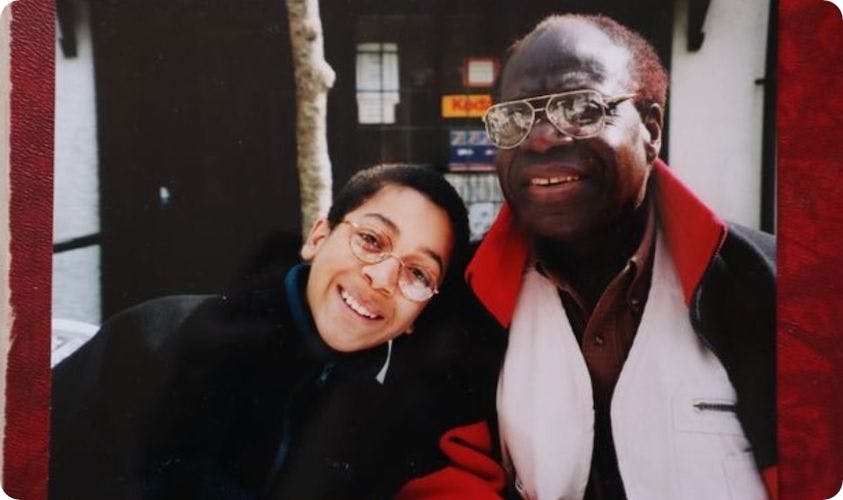
Joe Jaquest Oteng, whose surprising family history journey is documented in the series Hidden Roots.
In the age of the internet, it's easier than ever to access records from across the globe. With millions of migration records (including passenger lists and naturalizations) available, you can trace the journeys made by your very own ancestors.
You might just get hooked...
As seasoned researchers will tell you, nothing beats the rush you feel when finding the missing piece to a puzzle that's left you scratching your head. Perhaps you'll find the information you've been hunting for in a new record, or by looking at the same record through a different lens.
Here at Findmypast, we think that researching our past is a shared mission. When you add that first branch to your family tree, you join a wider community of curious-minded people.
Groups like the Findmypast Forum, with its weekly Friday Live video sessions, provide a way to connect with others who are in the same boat, to share your wins, and even ask for advice. By connecting you with both your family and other researchers, genealogy can help to combat loneliness and related mental health problems.
Our expert top tips: how to do research that a genealogist would be proud of
With these tips in your arsenal, you too will be an expert in no time.
Use of all of the records at your disposal
When carrying out family research, be sure to look further than birth, marriage and death records.
From travel to crime records, all manner of sources will help you to fill in the gaps. Censuses (of which there are over 300 million records available on Findmypast) are also very useful.
Leave no stone unturned
Where available, make sure to check the original record image for extra information that the transcription might have missed. Glean all the detail you can from every record you use.
Consider sharing the load
Hitting brick walls with your research can be frustrating, and may even make you want to give up. But remember, you don't have to go at it alone. Consider joining your local family history society, which will allow you to share your ancestry discoveries with others. Being part of a wider community of family historians can be really valuable - for both your research and your morale.
Bring your tree to life
The easiest way to inject colour into your family tree is to add rich content, like photographs of your ancestors and extra bits of information. This will make your tree more engaging to explore and bring your history to life like never before.
From templates to a family tree maker: what's the best way to build a family tree?
The logistics of it all might seem confusing at first - but once you get started, building a family tree is simpler than you might think. There are a few ways to make family trees...
How to make family trees online
The best way to build your tree is by using an online family tree maker. Make use of the handy tools provided by family history websites like Findmypast, and store your trees securely in your account.
You can either start a new tree using the intuitive tree builder, or if you've previously made one online, you can upload it as a GEDCOM file.
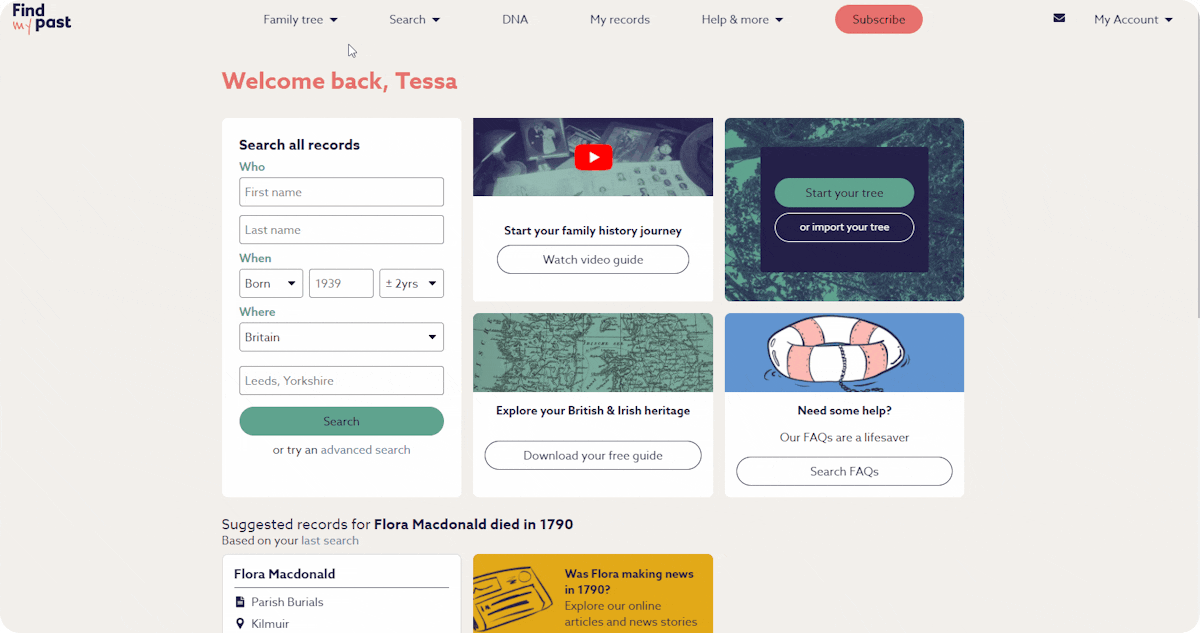
Starting a family tree with Findmypast
With the ability to share your tree with others, as well as view information stored in other users' trees through tree-to-tree-hints, Findmypast's tree-building software is designed to maximize your discoveries. It's like your personal family history genie.
Using family tree templates
If you'd rather start your family research offline, you can download a family tree template, then fill it out digitally or by hand. With Findmypast's free family tree template, you can trace back four generations of your family, which provides a great starting point before you expand your tree online, using billions of digitized records.
FAQs
How do I make a family tree online?
Building your tree online speeds up the process, as technology can help to supercharge your research. You can build your tree for free online with Findmypast - simply sign up for an account to ensure you save your progress.
With a free trial, you can access the records you need to trace your family back through the generations and unlock the stories of those unknown ancestors.
How do I create a family tree in Excel for free?
Although not recommended as a straightforward way to build your tree, you may be able to find some tree templates within Excel, by browsing 'family tree' via the search bar. To make your process as smooth as possible, most genealogists would instead steer you towards an online tree builder.
What does the average family tree look like?
No two families look alike, and the same can be said for each family's history. That being said, a typical family tree includes two parents, four grandparents and eight great-grandparents, as well as siblings, cousins and children on branches shooting off of this core group. People on a family tree can be either alive or deceased.
As your tree grows and relatives multiply, figuring out family relationships can prove tricky. That's where Findmypast's handy kinship calculator comes in.

The kinship calculator on King Charles III's family tree.
Third cousins once removed or first cousins thrice removed? You can use the nifty kinship calculator to figure out how any two people on your Findmypast family tree are related. You'll find it on the full profile of any relative. Select ‘Edit relationships’ via the menu denoted by three dots. This will take you to the Relations tab where you’ll see the kinship calculator. It will help you make sense of even the complicated relationships in seconds.
How do you complete a family tree chart?
As detailed above, you start your family tree by adding your own name, date of birth, and birthplace. From there, add your parents' information. If you've got siblings, you can add them sitting along the same branch as you. Next, you'll need to add known information about your grandparents, and build out the maternal and paternal sides of your tree from there.
Start your family tree today
Until you begin the first step of your genealogy journey, it's impossible to know what secrets lie within your family's tree. Perhaps you'll uncover the story of an inspirational ancestor, or be able to recognise similarities between yourself and your forebears who lived hundreds of years ago. To start making exciting discoveries, build your family tree with Findmypast.
There are few things more fulfilling than connecting with your past - in doing so, we learn a thing or two about the present.
Related articles recommended for you

Kamala Harris' family tree tells a tale of migration and education
Discoveries
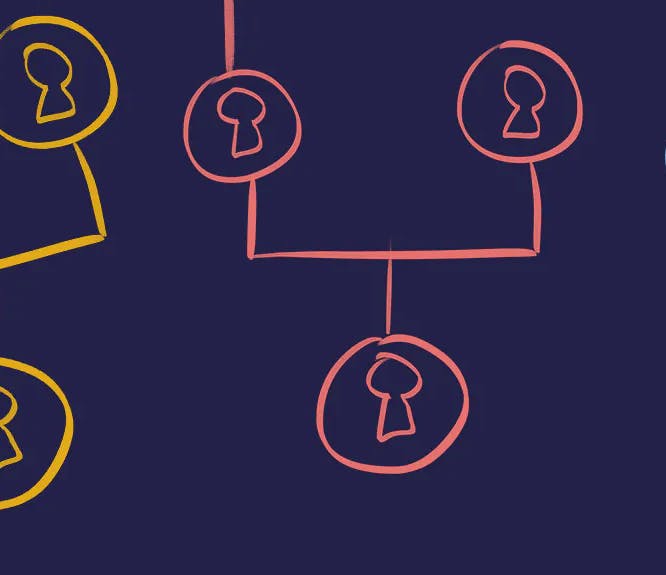
Use our free family tree template to kick-start your family history research
Build Your Family Tree
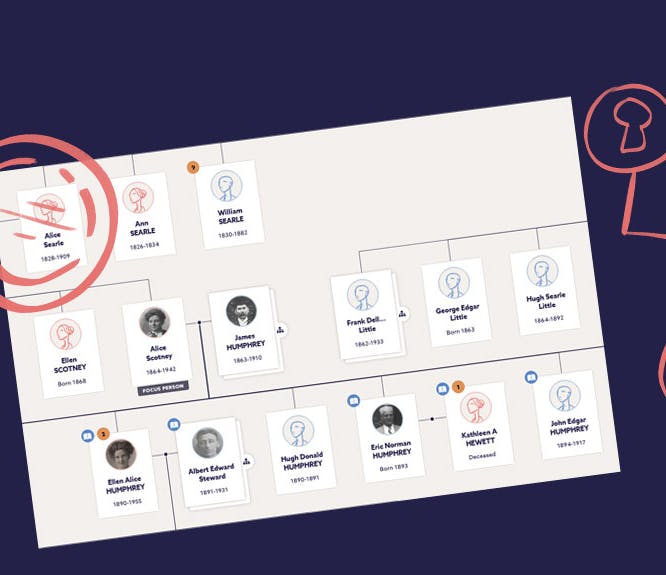
Your family tree questions answered
Build Your Family Tree

